

Ornamental gourd are eye-popping “decorative veggies”. Not edible, though.
Key Ornamental gourd facts
Name – Cucurbita, Lagenaria …
Family – Cucurbitaceae (gourds)
Type – ornamental vegetable
Height – 8 to 20 inches (20 to 50 cm)
Exposure: full sun – Soil: rich and well drained – Harvest: fall
Fruits come in surprising colors and shapes. After drying, they make excellent ornaments for fall and winter.
→ Often confused with true colocynth.
Ornamental gourd is grown just like pumpkin, they both come from the same family.
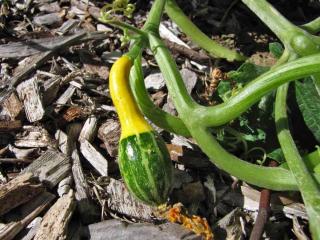
When transplanting the seedlings or sowing the seeds directly, provide for 3 feet (1 meter) growing space on all sides to give each decorative gourd plant enough room.
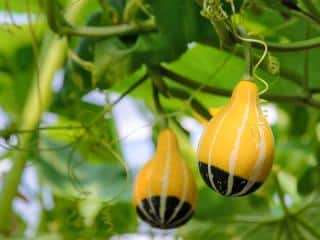
To avoid keeping each gourd fruit in close contact with the soil which could lead it to rot, it is better to add a layer of mulch or plastic between the fruit and the ground.
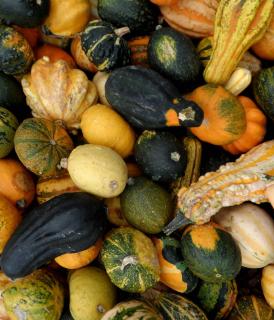
The only factor that counts is the size and color you are aiming for. The longer they stay on the plant, the larger they grow and the more pronounced colors become.
However, there are three things you ought to know:
Typically, ornamental gourd is harvested in fall. It keeps for several months when protected from moisture in a rather cool spot.
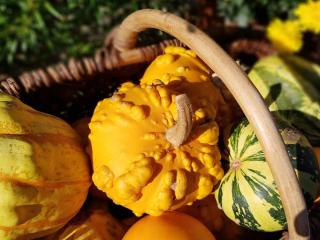 It is important to harvest these bizarre squash before the first heavy frost spells.
It is important to harvest these bizarre squash before the first heavy frost spells.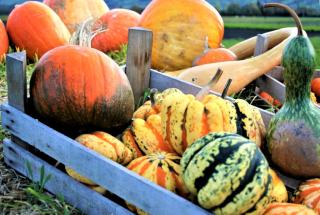
Dried and heaped in a basket, they are perfect to decorate a kitchen without needing to replace fruits as they rot.
You can also surprise your friends and children if you use smaller fruits as a Christmas tree decoration, it is beautiful and quite original! Of course, it’ll work wonders for Halloween, too – even carved!
A single plant will produce fruits that have a similar shape, but may differ greatly in color. If you want different shapes, you must plant different varieties (and even other species).
Usually, ornamental squash isn’t edible in that it doesn’t taste good and requires a lot of effort to prepare. But it’s not toxic or dangerous.
Don’t let too many fruits develop on a single plant (at most 5 or 6). Having too many fruits might reduce the quality of the entire harvest overall.